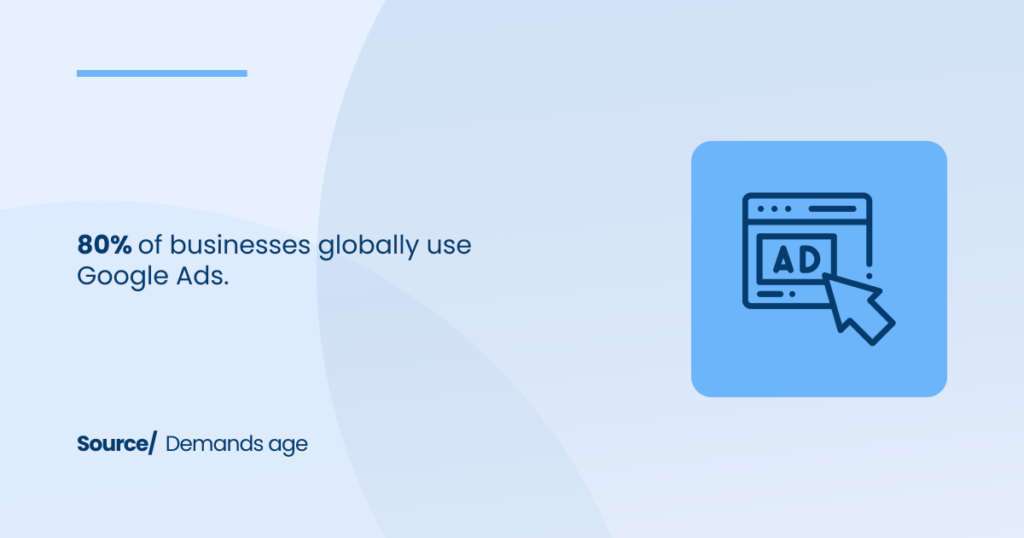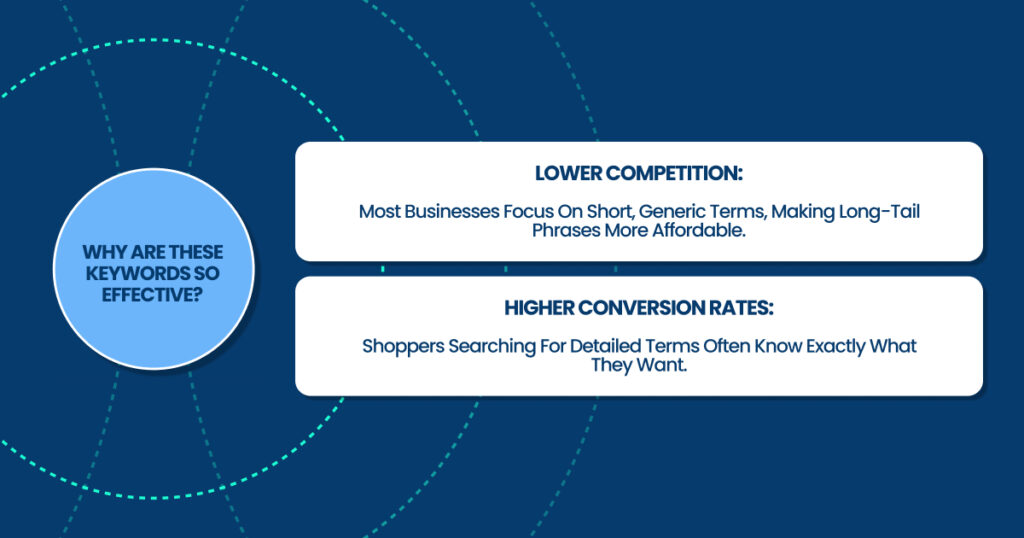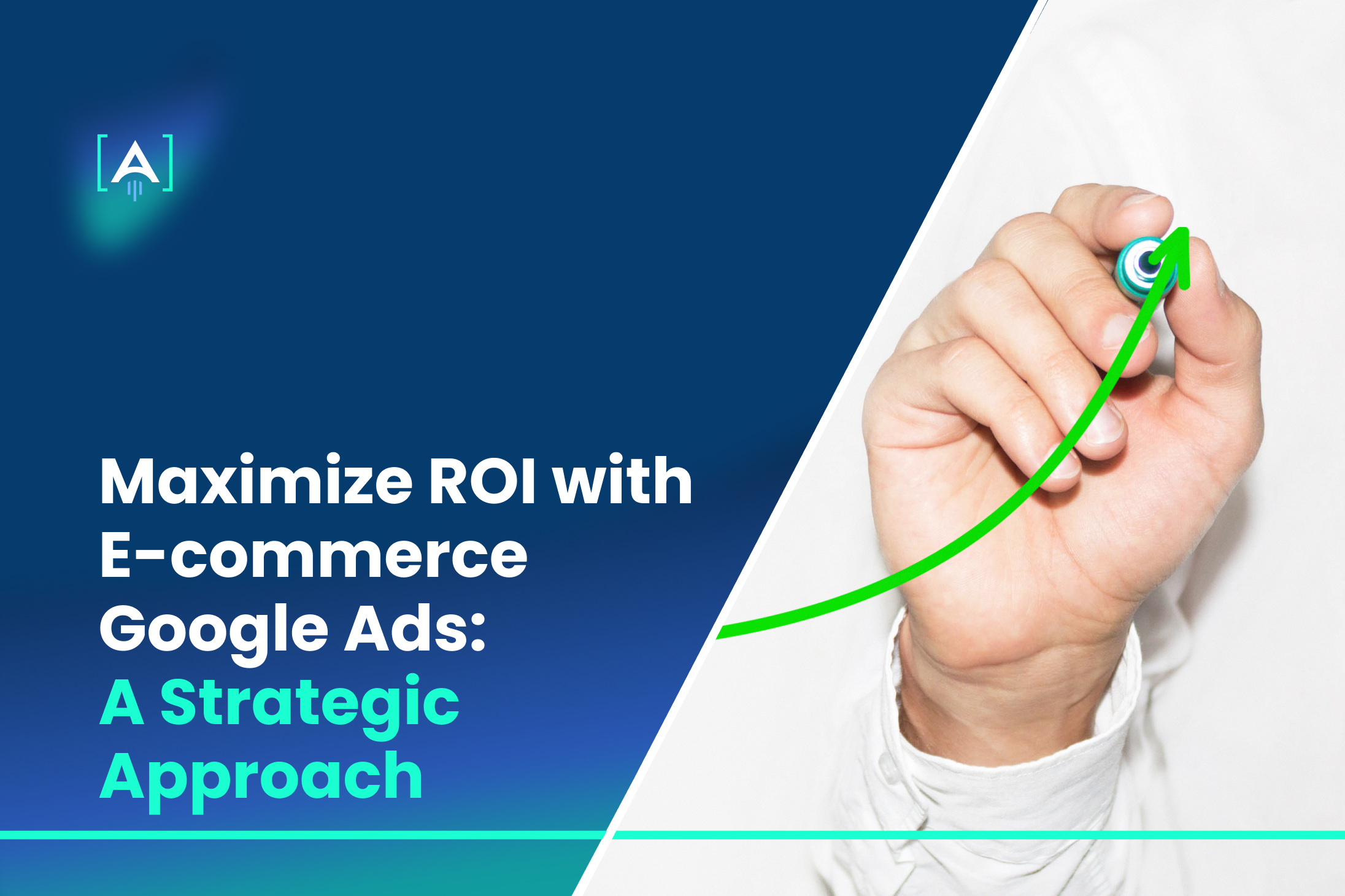Tired of watching your e-commerce ad dollars disappear into the digital environment?
You’re not alone.
But what if I told you there’s a secret to Google Ads that can turn those clicks into cold, hard cash? A strategic approach that blends creativity, data, and precision. That’s the magic of Google Ads for e-commerce.

Optimizing your Google Ads can unlock new levels of growth, cut wasted spend, and drive higher profits. An E-Commerce Marketing Agency will tell you about crafting campaigns that work harder and smarter for your business.
In this guide, we will discover practical strategies to maximize every dollar you invest in Google Ads.
Why Keywords Are Still the Real MVP of Google Ads
Keywords are the backbone of e-commerce advertising. They’re what connect your business with shoppers actively searching for products you sell.
However, not all keywords are created equal, and knowing how to select the right ones can mean the difference between wasting money and seeing real returns.
Long-Tail Keywords: Small Searches, Big Results
Sometimes, the less obvious keywords are the most profitable. These are known as long-tail keywords—phrases with three or more words that focus on specific buyer intent.
For instance, instead of bidding on a generic term like “running shoes,” targeting “men’s waterproof running shoes size 10” narrows down the audience to shoppers who are closer to making a purchase.

How do you find them?
- Google Keyword Planner: Start by entering general terms, then review suggestions for more specific variations.
- SEMrush: Dive into competitor analysis to discover less competitive keywords they might be targeting.
- AnswerThePublic: Uncover commonly asked questions related to your products, which can also be used as keywords.
By incorporating long-tail keywords into your ecommerce Google Ads, you can attract buyers who are further along in their decision-making process, increasing the likelihood of conversions.
Negative Keywords: Stop Wasting Your Budget
Imagine your ad for luxury watches appearing in searches for “cheap watches.” It’s a mismatch that not only wastes your ad spend but also hurts your campaign performance.
Source: SEMrush
This is where negative keywords come in—terms you tell Google to exclude from triggering your ads.
Why should you care?
- Saves money: Keeps your budget focused on relevant clicks.
- Improves ad performance: Boosts your click-through rate (CTR) by avoiding irrelevant impressions.
How to identify negative keywords:
- Search Terms Report: Analyze this report in Google Ads to see the actual queries triggering your ads. For example, if you sell premium handbags, terms like “discounted” or “used” may be irrelevant and should be added as negatives.
- Competitor Name Exclusion: Unless you’re targeting competitor searches, consider excluding their names to avoid paying for clicks unlikely to convert.
Adding negative keywords regularly refines your targeting, ensuring your ads are seen by the right audience—those ready to buy.
The Art of Persuasion: Creating Ads That Convert
Your ecommerce ads aren’t just about showing up; they’re about standing out.
Effective ads not only grab attention but also inspire action.
Words That Work: How to Write Winning Ad Copy
Every word in your ad matters.
With limited space, your copy needs to convey value, urgency, and relevance.
What makes ad copy effective?
- Benefit-Driven Headlines: Speak directly to what your audience wants. Instead of “Shop Running Shoes,” try “Run Faster with Ultra-Light Shoes.”
- Strong CTAs: Use phrases that create urgency or excitement, such as “Shop Now,” “Limited Stock,” or “Order Today.”
- Emotional Triggers: Appeal to emotions like trust (“Backed by a 30-Day Guarantee”) or exclusivity (“Only 10 Left in Stock”).
Test different combinations to see what resonates with your audience.
For example, ecommerce Facebook ads for handcrafted furniture could A/B test headlines like “Transform Your Space with Timeless Furniture” versus “Luxury Furniture Crafted for Your Home.”
Extensions That Go the Extra Mile
Ad extensions are like extra sprinkles on your ad—optional, but they make everything better.
These are additional pieces of information that appear alongside your ad, such as links to specific pages or customer reviews.
Why use them?
- More visibility: Extensions make your ad larger and more noticeable.
- Higher CTR: They provide more reasons for users to click.
Types to consider for ecommerce advertising:
- Site Link Extensions: Direct shoppers to specific categories like “New Arrivals” or “Best Sellers.”
- Call Extensions: Make it easy for potential customers to contact you directly.
- Review Extensions: Highlight positive feedback from your customers to build trust.
The key is to align your extensions with your goals.
For instance, if you’re running a campaign focused on local seo for ecommerce, use location extensions to guide shoppers to your nearest store.
The AI Advantage: Smart Bidding for Smarter Results
Bidding isn’t just about choosing a number; it’s about making every penny count.
That’s where AI-powered bidding comes in.
What AI Can Teach You About Bidding
AI takes the guesswork out of adjusting bids by analyzing real-time data to make smarter decisions.
Google Ads offers several automated bidding strategies tailored to specific goals:
- Target ROAS (Return on Ad Spend): Focuses on delivering a specific return on every dollar spent.
- Maximize Conversions: Aims to get as many conversions as possible within your budget.
Example: An online shoe retailer can use Target ROAS to prioritize showing ads for high-margin products during peak shopping hours, ensuring optimal profitability.
AI-driven bidding allows ecommerce marketing services to scale campaigns efficiently, focusing on profitability rather than clicks.
When Automation Meets Strategy: Fine-Tuning Your Campaigns
While automation simplifies bidding, it’s not a set-it-and-forget-it solution.
Source: Flair
Regular monitoring and adjustments are essential to keep campaigns on track.
Tips for fine-tuning:
- Review Performance Data Weekly: Look at metrics like conversion rate and CTR to ensure your bidding aligns with your goals.
- Adjust for Seasonality: During peak times like Black Friday, temporarily raise bids to capture higher demand.
- Exclude Low-Performing Products: Identify products that drain your budget without delivering returns and allocate resources to better-performing items.
For example, an ecommerce marketing analytics dashboard can reveal that mobile shoppers convert at a higher rate than desktop users. Based on this insight, you can adjust your bids to prioritize mobile traffic.
Beyond the Click: Making the Most of Landing Pages
Driving traffic with e-commerce ads is only part of the journey.
What happens after someone clicks is where the real magic lies. Your landing page is the first impression shoppers get of your store. It’s the difference between a lost visitor and a new customer.
Why Your Landing Page Is More Important Than Your Ad
Your ad may win the click, but it’s your ecommerce landing page optimization that wins the sale.
Source: Backlinko
A great landing page isn’t just visually appealing—it’s fast, easy to navigate, and designed to guide visitors toward action.
Why it matters:
- Page Speed: Slow-loading pages frustrate shoppers. Statistics show that a one-second delay can reduce conversions by up to 7%. Use tools like Google PageSpeed Insights to identify areas for improvement.
- Mobile Optimization: More than 60% of e-commerce traffic comes from mobile devices. A landing page that isn’t mobile-friendly risks losing a majority of potential customers. Ensure your site’s layout adapts seamlessly to smaller screens.
- Clear CTAs: Your call-to-action (CTA) needs to stand out. Use bold buttons with action-driven text like “Shop Now” or “Claim Your Discount.”
Designing a frictionless user experience:
- Keep navigation simple: Don’t overwhelm visitors with too many links or options. Focus on the goal of the page—whether it’s a purchase, sign-up, or download.
- Use high-quality visuals: Show product details clearly with professional images or videos.
- Build trust: Include customer reviews, secure payment icons, or trust badges to reassure hesitant buyers.
For example, an online store selling skincare products can use a landing page with before-and-after photos, a “Buy Now” button above the fold, and reviews from happy customers—all of which build credibility and drive action.
Personalization Pays Off: Creating Landing Pages That Resonate
No two shoppers are the same, so why should your landing pages treat them as such?
Personalization is about making the visitor feel like the page was designed just for them.
Source: Adam Connell
How to personalize effectively:
- Dynamic Content: Adjust headlines, images, or CTAs based on the ad’s message. If someone clicks an ad for “Eco-Friendly Sneakers,” the landing page should highlight those products immediately.
- Location-Based Customization: Use ecommerce local SEO insights to show store-specific offers or nearby pickup options.
- Behavior-Driven Content: If the shopper has visited your site before, tailor the page to show products they’ve viewed or left in their cart.
Why it works: Personalized landing pages can increase conversion rates by up to 202%, according to HubSpot. Shoppers respond better when the experience feels relevant to their needs.
For instance, a visitor coming from a social media marketing for ecommerce ad might land on a page with a curated collection of Instagram-worthy items, driving both engagement and purchases.
Audience Insights That Change the Game
Understanding your audience isn’t optional; it’s essential.
The more you know about your customers, the better you can craft ecommerce advertising that speaks directly to them.
The Power of Custom Audiences: Speak Directly to Your Buyer
Custom audiences let you segment shoppers into groups based on their behaviors, interests, and demographics.
This allows you to create targeted campaigns that feel personalized and effective.
How to create custom audiences:
- Cart Abandoners: These shoppers were close to purchasing but didn’t complete the checkout. Ads targeting them with a discount or free shipping can entice them to return.
- Loyal Customers: Offer exclusive deals to repeat buyers to increase lifetime value. For example, a 10% discount on their next order can encourage them to shop again.
- Interest-Based Segments: If you sell home decor, create ads targeting groups interested in “Modern Design” or “Rustic Style.”
Local Love: Why Geo-Targeting Boosts ROI
Focusing your ecommerce Google Ads on specific locations isn’t just for physical stores.
It can also help online businesses maximize their ad spend by concentrating on areas with the most potential customers.
Why geo-targeting matters:
- Certain regions may show stronger demand for specific products. For example, winter coats sell better in colder areas.
- Shipping or delivery options may vary by location, and ads can highlight these details.
How to use geo-targeting effectively:
- Identify high-performing locations in your analytics. If your ecommerce marketing analytics reveal that New York drives the most revenue, increase bids for that area.
- Create location-specific ads. If you offer same-day delivery in Los Angeles, mention it in your ad copy and landing page.
- Adjust campaigns seasonally. Use geo-targeting to promote summer products in warm regions or holiday gifts in metropolitan areas during December.
Example of a local campaign for e-commerce: A bakery specializing in customizable cakes can target local customers with ads like “Order Your Custom Cake in Chicago Today! Free Same-Day Pickup Available.” This message resonates because it feels relevant and immediate.
Wrapping Up
Google Ads is an opportunity to create meaningful connections with your customers. From choosing the right keywords to fine-tuning landing pages and leveraging audience insights, every element plays a critical role in turning clicks into meaningful returns.
[A] Growth Agency will support you in the process. We specialize in turning entrepreneurial dreams into reality with effective, tailored growth strategies.
Excellence is our standard. Every business we work with is a partner. We’re invested in their success as deeply as our own, fostering a mutual growth journey.
If this is what you are looking for, then go ahead.

